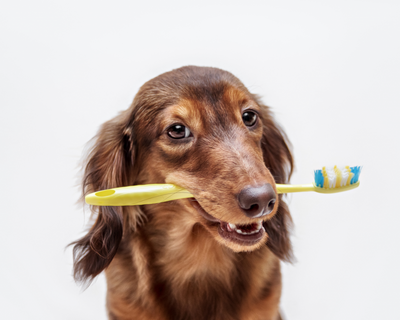 If you're a dog owner in Sydney or the Southern Highlands of NSW, you may have heard of the benefits of feeding your furry friend a raw food diet. But making the switch from kibble to raw can seem daunting, especially if you're not sure where to start. That's where this guide comes in. As a pet owner, you want the best for your four-legged friend, and transitioning them to a raw food diet can provide numerous health benefits. From improved digestion and increased energy levels to healthier skin and a shinier coat, the benefits speak for themselves.
If you're a dog owner in Sydney or the Southern Highlands of NSW, you may have heard of the benefits of feeding your furry friend a raw food diet. But making the switch from kibble to raw can seem daunting, especially if you're not sure where to start. That's where this guide comes in. As a pet owner, you want the best for your four-legged friend, and transitioning them to a raw food diet can provide numerous health benefits. From improved digestion and increased energy levels to healthier skin and a shinier coat, the benefits speak for themselves.Understanding the raw food diet for dogs
A raw food diet for dogs is exactly what it sounds like – feeding your dog raw, unprocessed food instead of commercial dog food. This includes raw meat, organs, bones, and vegetables. This type of diet is believed to mimic what dogs would eat in the wild and can provide numerous health benefits.
Many dog owners who switch to a raw food diet report an improvement in their dog's overall health, including healthier skin and coat, smaller and less smelly stools, and increased energy levels. However, it's important to understand that a raw food diet is not suitable for all dogs. Some dogs may have underlying health conditions that make it difficult for them to digest raw food, so it's important to consult with your veterinarian before making the switch.
It's also important to note that a raw food diet requires careful planning and preparation to ensure your dog is getting all the necessary nutrients they need. This includes a balance of protein, fat, and carbohydrates, as well as essential vitamins and minerals.
The benefits of a raw food diet for dogs
There are many benefits of a raw food diet for dogs. One of the most significant is improved digestion. Because raw food is unprocessed and does not contain fillers or additives, it is easier for dogs to digest. This can lead to smaller and less smelly stools, as well as a reduction in gastrointestinal issues such as bloating and diarrhea.
Another benefit of a raw food diet is improved dental health. Chewing on raw bones can help keep your dog's teeth clean and healthy, reducing the risk of dental problems such as gum disease and tooth decay.
A raw food diet can also lead to healthier skin and coat. The high levels of omega-3 fatty acids found in raw fish can help reduce inflammation and promote healthy skin and a shiny coat. Additionally, the high levels of protein found in a raw food diet can help build and maintain muscle mass, leading to a leaner and healthier dog.
Risks and challenges of transitioning to a raw food diet
While there are many benefits to a raw food diet, there are also risks and challenges to consider. One of the biggest challenges is ensuring your dog is getting all the necessary nutrients they need. A raw food diet requires careful planning and preparation to ensure your dog is getting a balance of protein, fat, and carbohydrates, as well as essential vitamins and minerals.
Another challenge is the risk of bacterial contamination. Raw meat can contain harmful bacteria such as salmonella and E. coli, which can pose a risk to both dogs and humans. It's important to handle raw meat safely and ensure your dog's food is stored properly to reduce the risk of contamination.
Finally, some dogs may not take to a raw food diet immediately and may experience gastrointestinal upset or other issues during the transition period. It's important to make the switch gradually and monitor your dog's health closely throughout the process.
Preparing to transition: What you need to know and have
Before making the switch to a raw food diet, it's important to do your research and prepare properly. Here are some things you should know and have before making the switch:
1. Consult with your veterinarian: Before making any changes to your dog's diet, it's important to consult with your veterinarian. They can help you determine if a raw food diet is right for your dog and provide guidance on how to make the transition safely.
2. Choose a high-quality raw food: Not all raw food is created equal. Look for a supplier that sources their meat from reputable sources and uses high-quality ingredients.
3. Invest in a good quality freezer: A raw food diet requires a lot of freezer space. Invest in a good quality freezer to ensure you have enough space to store your dog's food.
4. Consider supplements: To ensure your dog is getting all the necessary nutrients they need, you may need to supplement their diet with vitamins and minerals.
5. Start slowly: When making the switch to a raw food diet, it's important to start slowly. Begin by introducing small amounts of raw food into your dog's diet and gradually increase the amount over time.
Switching your dog to a raw food diet: Step-by-step guide
Making the switch to a raw food diet requires careful planning and preparation to ensure your dog's digestive system can adjust to the new diet. Here is a step-by-step guide to help you make the transition:
1. Start by introducing small amounts of raw food into your dog's diet. Begin with just a few pieces of raw meat or a small amount of raw vegetables.
2. Gradually increase the amount of raw food in your dog's diet over time. Aim to have your dog on a 100% raw food diet within 4-6 weeks.
3. Monitor your dog's health closely throughout the transition period. Look for signs of gastrointestinal upset or other issues and adjust the amount of raw food you're feeding accordingly.
4. Consider adding supplements to your dog's diet to ensure they are getting all the necessary nutrients they need.
5. Be patient. It may take some time for your dog to adjust to the new diet, but with patience and persistence, they will eventually adapt.
Maintaining a raw food diet: Tips and tricks
Once your dog is fully transitioned to a raw food diet, there are a few tips and tricks to help you maintain their new diet:
tricks to help you maintain their new diet:
1. Rotate proteins: To ensure your dog is getting a variety of nutrients, it's important to rotate the types of proteins you're feeding. This could include beef, chicken, lamb, and fish.
2. Incorporate vegetables and fruits: Vegetables provide important vitamins and minerals and can help balance out your dog's diet. Consider adding vegetables such as carrots, spinach, and broccoli to your dog's meals. Fruits can provide antioxidants, we recommend apple, blueberries.
3. Offer raw bones: Raw bones can help keep your dog's teeth clean and healthy. However, it's important to only offer raw bones and never cooked bones, which can splinter and pose a choking hazard.
Where to find raw food for dogs in Bowral and the Southern Highlands?
 If you're looking for high-quality raw food for your dog, we supply several options to choose from. Here are a few of the best:
If you're looking for high-quality raw food for your dog, we supply several options to choose from. Here are a few of the best:
1.The Butcher's Dog Raw Food, a premium selection of frozen raw dog food designed to provide optimal nutrition for your beloved pet. Our range is carefully crafted with locally sourced meat and fresh vegetables, ensuring the highest quality ingredients for your furry friend.
The The Butcher's Dog range is free from preservatives, fillers, grains, and harmful chemicals. Each recipe has been developed in collaboration with Australian pet nutritionists, guaranteeing a well-balanced and nutritious meal for your pooch.
Whether your dog prefers lamb and beef, or chunky beef & vegetables we have a freshly prepared meal that suits their individual needs. With options like chicken dinner, beef dinner, and vegan dinner, you can provide your pup with a meal that they'll love.
The Butcher's Dog range goes beyond just regular meals for dogs (and cats). A fruit, vegetable, and organ supplement is available and is essential to enhance your dogs diet further.
To make mealtime even more convenient, we offer a specially designed storage container that fits each meal disc perfectly. This container allows you to safely thaw the food in the refrigerator, ensuring freshness and ease of preparation.
Choose The Butcher's Dog Raw Food for your furry companion and provide them with a nourishing and wholesome diet that they deserve.
 The Right Start Pet Food produces all-natural diets that are 100% fit for purpose canine nutrition without any additives or artificial colours. We especially love their nutritious range of salmon heads, salmon bellies, turkey drumsticks and bone broth. These all make a delicious addition to pet owners who mix feed or like to treat their pets with healthy meal toppers!
The Right Start Pet Food produces all-natural diets that are 100% fit for purpose canine nutrition without any additives or artificial colours. We especially love their nutritious range of salmon heads, salmon bellies, turkey drumsticks and bone broth. These all make a delicious addition to pet owners who mix feed or like to treat their pets with healthy meal toppers!
Frequently asked questions about raw food diet for dogs
Q: Is a raw food diet suitable for all dogs?
A: No, a raw food diet may not be suitable for all dogs. It's important to consult with your veterinarian before making the switch.
Q: Can a raw food diet cause bacterial contamination?
A: Yes, raw meat can contain harmful bacteria such as salmonella and E. coli, which can pose a risk to both dogs and humans. It's important to handle raw meat safely and ensure your dog's food is stored properly to reduce the risk of contamination.
Q: How do I know if my dog is getting all the necessary nutrients on a raw food diet?
A: It's important to ensure your dog is getting a balance of protein, fat, and carbohydrates, as well as essential vitamins and minerals. Consult with your veterinarian and consider adding supplements to your dog's diet to ensure they are getting all the necessary nutrients they need.
The benefits of a raw food diet for your dog and your relationship.
© weknowpets 2023





